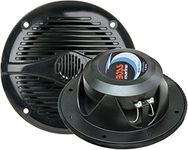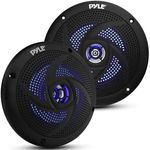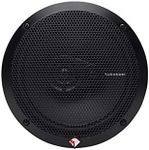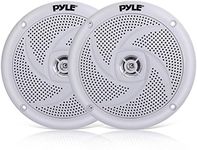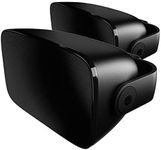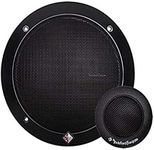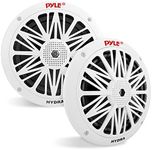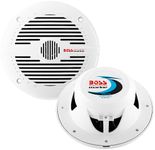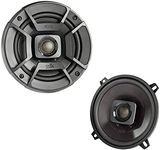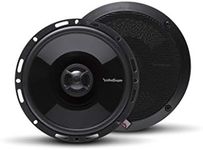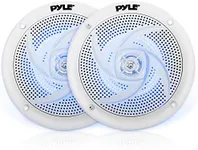Buying Guide for the Best Rv Speakers
Choosing the right RV speakers can make a big difference in your travel experience, whether you enjoy music, podcasts, or movies on the road. The best approach is to think about where and how you’ll use the speakers—inside, outside, or both—and what kind of sound quality you want. Consider the space available for installation and whether you want to replace existing speakers or add new ones. Understanding the key specifications will help you find speakers that fit your RV and your listening preferences.Speaker SizeSpeaker size refers to the diameter of the speaker cone, usually measured in inches. This is important because it affects both the sound quality and whether the speaker will physically fit in your RV’s existing cutouts. Common sizes include 5.25-inch, 6.5-inch, and 6x9-inch. Smaller speakers are easier to fit in tight spaces and are good for background music, while larger speakers can produce deeper bass and fuller sound, which is better for those who want a richer audio experience. To pick the right size, measure your available space and consider how much sound you want to fill the area.
Power Handling (Watts)Power handling tells you how much power (in watts) a speaker can handle from your audio system without being damaged. This is important because matching the speaker’s power rating to your stereo ensures clear sound without distortion or risk of blowing the speaker. Power handling is usually given as RMS (continuous power) and peak (maximum short burst). Lower wattage speakers (20-40W RMS) are fine for casual listening, while higher wattage (50W RMS and above) is better for louder, more dynamic sound. Choose based on how loud you like your music and the power output of your RV’s stereo.
Impedance (Ohms)Impedance, measured in ohms, is a measure of electrical resistance. Most RV speakers are 4 or 8 ohms. This matters because your stereo or amplifier is designed to work best with a certain impedance. Using speakers with the wrong impedance can lead to poor sound or even damage your equipment. For most RV setups, 4-ohm speakers are standard and work well with most head units. Check your stereo’s specifications to match impedance for the best performance.
Weather ResistanceWeather resistance means the speaker is built to withstand moisture, dust, and temperature changes, which is especially important for outdoor or semi-exposed installations in an RV. Some speakers are labeled as marine or all-weather, meaning they can handle rain, humidity, and sun without degrading. If you plan to install speakers outside or in damp areas, look for weather-resistant models. For indoor use, standard speakers are usually sufficient.
Mounting DepthMounting depth is how deep the speaker is from front to back. This is important because RV walls and ceilings can be thin, and you need to make sure the speaker will fit without hitting anything behind the panel. Shallow-mount speakers are designed for tight spaces and are a good choice if you have limited depth. Measure your installation area before buying to ensure a proper fit.
SensitivitySensitivity measures how efficiently a speaker converts power into sound, usually given in decibels (dB). Higher sensitivity means the speaker will play louder with less power, which is useful if your stereo isn’t very powerful. Speakers with sensitivity ratings above 88 dB are considered efficient and are a good choice for most RV stereos. If you have a low-powered head unit, look for higher sensitivity to get the most volume and clarity.

